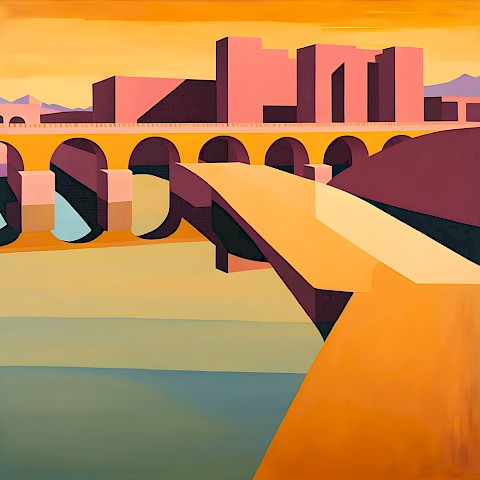|
07 VIII 2025 |
12. Rome and After 1828-35
485 - Caligula’s Palace and Bridge | |

| ||
|
Exhibited in 1831 with the following lines attributed to Turner's Fallacies of Hope (here quoted from Turner's own list of his i831 exhibits, now in the Tate Gallery archive): What now remains of all the mighty Bridge Which made the Lucrine Lake an inner pool, Caligula, but massy fragments left, As monuments of doubt and ruind hopes Yet gleaming in the Morning's ray, doth tell How Baia's shore was loved in times gone by ? Here Turner returns to the theme of 'Bay of Baia' (No.237), the decay of past glories. Caligula's bridge crossed the three and a half Roman miles from Baiae to Puteoli and was described by Oliver Goldsmith as 'the most notorious instance of his fruitless profusion'. Although the bridge was, in fact, a bridge of boats Turner followed popular accounts in showing it as a solid structure (see Gage 1974, P.47). Unlike 'Vision of Medea' this picture seems to have aroused universal praise. 'In this picture "the fit hath gone off'' said the Athenaeum for 14 May 1831; 'Here we have the poetry of nature lavished upon us with a courteous hand'. La Belle Assemblée described it, in its June number, as one of the most magnificent and extraordinary productions of the day; ... it is poetry itself. The air-tint - the distances - are magical: for brilliancy and depth, and richness, and power, it can hardly be surpassed.' For The Times of 6 May it was one of the most beautiful and magnificent landscapes that ever mind conceived or pencil drew? The Library of the Fine Arts for June 183I, anticipating Ruskin's criticisms of these packed Italian landscapes as 'nonsense pictures', described it more positively as a composition, any one portion of which is in itself a picture, and would make the fortune of another artist'. As luck had it Turner's picture hung next to Constable's 'Salisbury Cathedral from the Meadows' (Lord Ashton of Hyde). 'Fire and water', the Literary Gazette for I4th May exclaimed; 'Exaggerated, however, as both these works are, - the one all heat, the other all humidity, - who will deny that they both exhibit, each in its way, some of the highest qualities of art ? None but the envious or ignorant.' Apparently Constable, who was on the Hanging Committee that year, had moved Turner's picture and replaced it with his own, for which Turner teased him unmercifully at a dinner at General Phipps' in Mount Street, to the great amusement of the party, mainly artists (the story is David Roberts', given in Thornbury 1862, II, p.56, and dated to this year by Finberg 1961, p.327). The picture was engraved in 1842 by E. Goodall, whose son told W. G. Rawlinson (II, 1913, pp.336-7) that Turner, deciding that the composition required more figures, added them on the picture himself, first with white chalk, and then, when Goodall was unable to follow these slight sketches, in watercolour. According to Thornbury, who however asserts that the figures were introduced, with Turner's assent, by Goodall, they were the children playing with goats in the foreground (1862, I, p.319). Recent restoration, however, failed to determine that any of the figures as they now are were painted in watercolour; perhaps Turner went over them later in oil. An image generated by an AI Machine Learning Model Property of the artist. | ||
